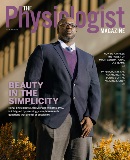Education Innovator
Meet Dee Silverthorn, PhD, FAPS: pioneering physiology educator and 95th president of APS.
By Christina Hernandez Sherwood
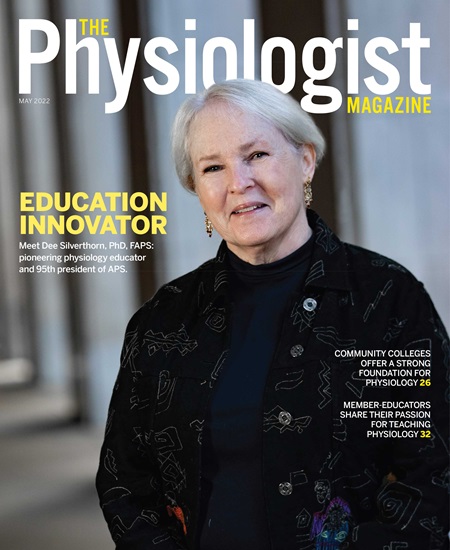
At several points during her long career, Dee Silverthorn, PhD, FAPS, thought her promising trajectory appeared to be going sideways. There was the time she left a tenure-track position and closed her research lab to follow her husband to Texas. And the time she dropped out of science for six years.
But while her unconventional path seemed at times to mirror the hallmark sideways gait of her preferred research animal, the crab, Silverthorn’s zig-zagging road was nevertheless paved with accomplishments. The most recent? She is the new APS president.
“You don’t have to follow the traditional pathway to be successful,” says Silverthorn, distinguished teaching professor of physiology emerita at Dell Medical School at the University of Texas at Austin. “You need to find what you love to do and just follow it.”
Silverthorn grew up in New Orleans where her father, in his time off from working as a physician scientist, built a cabin cruiser boat in the backyard. No surprise that her first love was the marine world. She graduated with honors from Tulane University with a bachelor’s in biology before pursuing a PhD in marine science at the University of South Carolina.
“For years, I worked on blue crabs,” she says. “We would take the gills out—what they call the dead man’s fingers—and the fat body. That was our research tissue. We’d keep the rest of the carcass on ice and take them home and have them for dinner.”
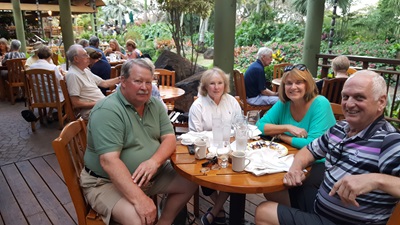 After she married Andrew Silverthorn, a Vietnam veteran stationed near the university, and completed her PhD, Silverthorn became the
first woman to join the physiology faculty at the Medical University of South Carolina in Charleston. But she soon left the tenure-track position to follow her husband to Galveston, Texas, where he was matched with a family medicine residency. Silverthorn
landed a one-year visiting professorship in Houston but for a variety of reasons couldn’t continue her research there, which was funded by the National Institutes of Health (NIH). Instead, she took a research scientist position at the University
of Texas Medical Branch.
After she married Andrew Silverthorn, a Vietnam veteran stationed near the university, and completed her PhD, Silverthorn became the
first woman to join the physiology faculty at the Medical University of South Carolina in Charleston. But she soon left the tenure-track position to follow her husband to Galveston, Texas, where he was matched with a family medicine residency. Silverthorn
landed a one-year visiting professorship in Houston but for a variety of reasons couldn’t continue her research there, which was funded by the National Institutes of Health (NIH). Instead, she took a research scientist position at the University
of Texas Medical Branch.
“My husband was saving lives, and I was looking at sodium transport in the rabbit urinary bladder,” Silverthorn says. “I began to question just how much I was contributing to society doing basic research.”
So began Silverthorn’s six-year hiatus from science. She spent her days performing with a dance company, designing and selling needlework and multimedia fiber art, and volunteering her time to historic preservation. When her husband launched a solo family medicine practice, she became its manager. She also taught biology at a private high school for a year.
Reconnecting to Academia
Then a friend from the dance world told her about a one-semester position at the University of Texas at Austin. Silverthorn got the job—and decided she didn’t want to leave teaching again. “I realized that I really liked being there,” she says. “I sat down with the department chair and showed her my CV and said, ‘I’ve been out. I gave up that NIH grant. Have I totally shot my career in the foot?’ And she went, ‘Yeah, you have.’”
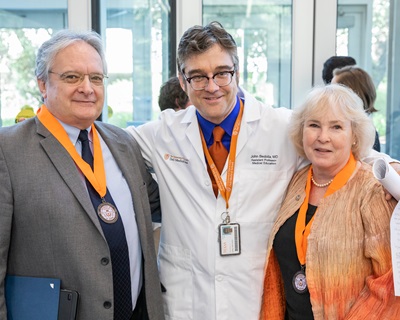
But the chair offered Silverthorn a second chance at a career in academia. She took over a physiology course from a retiring professor and found that its accompanying lab courses were in shambles. Silverthorn drew on her expertise with invertebrates—along with crabs, she had experience studying cockroaches—to phase mammals out of the lab curriculum. “I came up with a series of labs that were invertebrate model systems, showing the same principles that all these vertebrate systems had before.” Silverthorn secured a grant from the National Science Foundation to transition to invertebrate models and to innovate with computer data acquisition systems for the student lab. “That was the beginning of everything,” she says. “I’d cemented my place in the department by taking on the labs.”
Silverthorn also found herself teaching her graduate students how to teach their lab sections. “You’re not in the lab with the graduate students. They are the teachers, and they were just being thrown in the labs and not told how to do anything,” she says. Silverthorn, who had no formal educational training herself, attended the university’s annual conference on teaching and learning, then passed on what she learned to her graduate teaching assistants. “My philosophy for the teaching assistants was: The lab is the only time you’re going to be an independent teacher in the classroom while you’re a graduate student,” she says.
Reinventing Teaching
While she was revamping the labs, Silverthorn was also changing her classroom teaching. Frustrated by the unnecessary tedium of repeating definitions for a class of 200, Silverthorn created a lecture workbook that contained the basics of what her students needed to know. Required reading was assigned before each class meeting, and students were quizzed on the material at the start of class. The rest of the class time was devoted to higher-level skills and techniques.
“Do the basics first,” Silverthorn says. “Then they come to class and work in small groups, and I throw problems at them and teach them how to think and how to apply material.” Today, this model is known as “the flipped classroom.” Silverthorn called it “the upside-down classroom.”
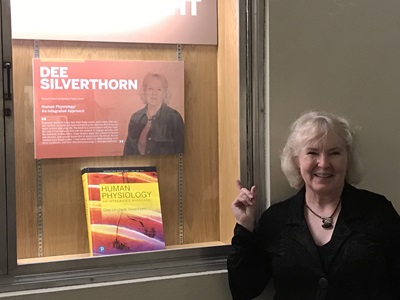 The lecture workbook Silverthorn created for her first “upside-down classroom” turned out to
be something of a trial run in book writing. In 1997, she published the textbook “Human Physiology: An Integrated Approach.” The book became a bestseller and is now in its eighth edition.
The lecture workbook Silverthorn created for her first “upside-down classroom” turned out to
be something of a trial run in book writing. In 1997, she published the textbook “Human Physiology: An Integrated Approach.” The book became a bestseller and is now in its eighth edition.
Silverthorn enjoys innovating in the classroom and experimenting with new technologies. She was an early adopter of “clickers,” remote control-like technology that allowed instructors to ask questions and immediately tally responses from the entire class. And she taught her class online years before Zoom became a household word. With recurring ice storms canceling her 8 a.m. class in 2014, Silverthorn got creative. “One cancellation a semester, you can work with,” she says. “But after the first one, I said, ‘OK, we’re doing class online.’” Silverthorn used a web conferencing tool on the teaching platform Canvas to host—and record—class from her home. “I actually ended up doing four online classes that semester,” she says.
Silverthorn, who has received more than a dozen teaching awards, stepped into her role as Society president at a moment that plays to her strengths in education. “It was just an amazing time to be elected,” says Silverthorn, a longtime APS member and past chair and secretary of the Society’s Teaching of Physiology Section.
As the first president with an educational focus, Silverthorn, along with the founding advisory board, will guide the launch of the Society’s new Center for Physiology Education, a resource and community hub for members.
Silverthorn says she’s keen for the Center to provide something for everyone, not just classroom teachers. “It’s not just about classroom education. It’s also about training and giving people expertise in different areas of physiology.”
This article was originally published in the May 2022 issue of The Physiologist Magazine.
FASTFACTS
Legacy of APS Service & Physiology Leadership
- APS member since 1977
- Fellow of APS since 2015
- Fellow of the American Association of Anatomy
- Fellow of the American Association for the Advancement of Science
- APS Council (2006–2009)
- Member, Team 2023 Task Force and the Physiology Summit Leadership Committee, which is developing APS’ new annual meeting, the American Physiology Summit
- Member, past chair and secretary of the APS Teaching of Physiology Section
- Author of the bestselling textbook “Human Physiology: An Integrated Approach”
- Past chair, APS Book Committee
- APS Arthur C. Guyton Distinguished Educator Award
- University of Texas Regents’ Outstanding Teaching Award
Education
- PhD, University of South Carolina
- BS, Biology, Tulane University
Silverthorn secured a grant from the National Science Foundation to transition to invertebrate models and to innovate with computer data acquisition systems for the student lab. “That was the beginning of everything,” she says. “I’d cemented my place in the department by taking on the labs.”
The Physiologist Magazine
Read the Latest Issue
Don’t miss out on the latest topics in science and research.
View the Issue Archive
Catch up on all the issues of The Physiologist Magazine.
Contact Us
For questions, comments or to share your story ideas, email us or call 301.634.7314.


